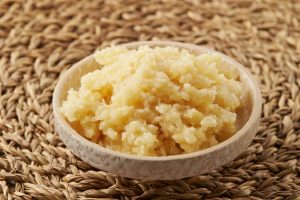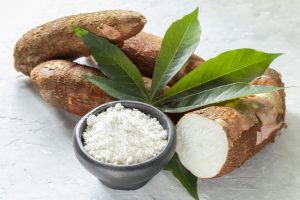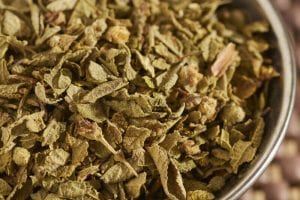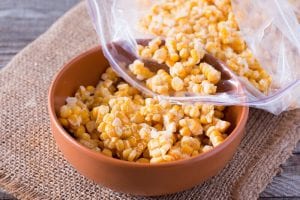
Tamarind is a pod-like fruit extracted from the tamarind tree. It has a sweet and sour pulp that similarly tastes like dates found in tropical regions. You will often find this versatile ingredient in several cuisines such as Indian, Mexican, Vietnamese, Latin American, as well as Thai cooking. Similarly, tamarind paste — a by-product from the tamarind fruit — also holds a prominent place among these cuisines. Pad Thai noodles is just one of the most popular dishes that use this ingredient.
To incorporate tamarind paste into some of your dishes, you can find some in international stores near you. Though you may have more luck finding one in Indian and Asian grocery stores.
If tamarind paste is alien to you, here are some things you need to know as well as substitutes you can try to help you understand and cook with this remarkable ingredient.
What Is Tamarind Paste: Taste, Benefits, and Storage
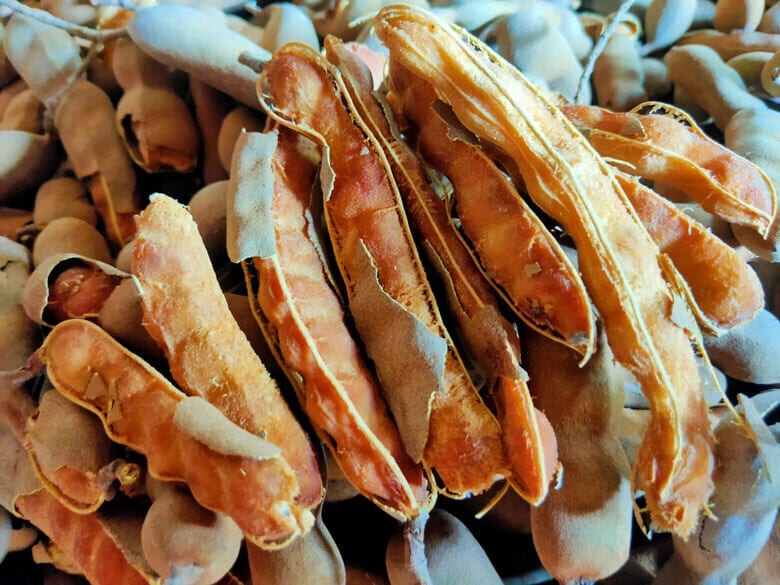
Again, tamarind paste is made from the pulp of the tamarind fruit. Though this paste mostly has a sour flavor, it also has a complex flavor profile that ranges from sweet and tangy to tart and potent. But really, it depends on how ripe the fruit is. Ripen it a bit more and you’ll end up with a sweeter tamarind pulp. The earlier you use tamarind, the sourer it will taste.
To add, there are several tamarind paste benefits you may not know about. Tamarinds are rich in fiber and are a great source of antioxidants that help digest consumed food. Moreover, eating tamarind actually helps one to lose weight.
If you are dedicated to adding this versatile ingredient to your pantry, you can buy it pre-made, or make it yourself at home. It’s also important to remember to store it in a cool and dry place. A cupboard works if you’re living under cool weather conditions. Otherwise, store it in the refrigerator for longer shelf life.
Many Uses of Tamarind Paste in Cooking
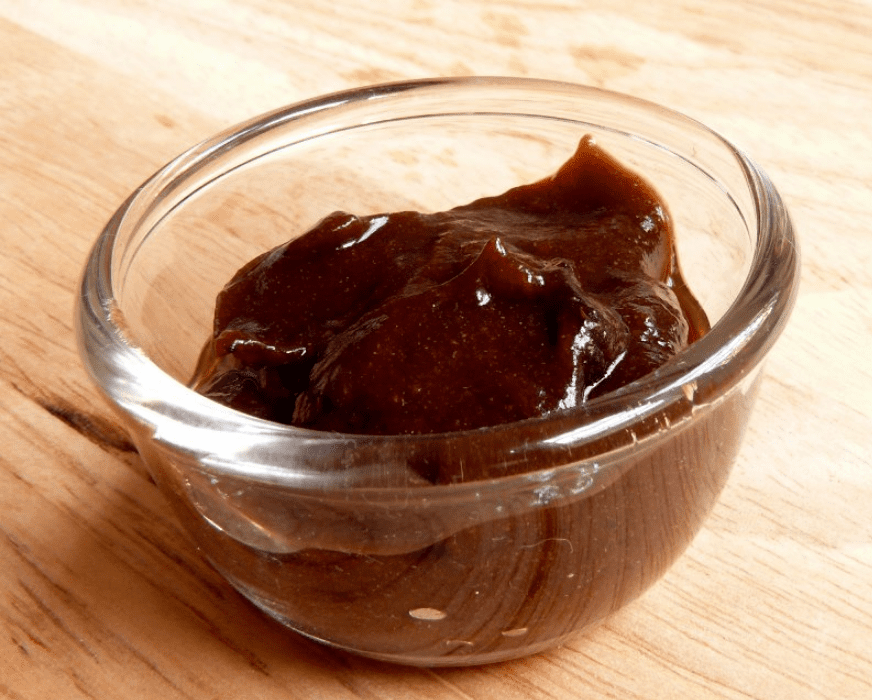
Flickr | Dorami Chan
Tamarind paste has many uses in the kitchen. And without a doubt, it holds a special place in a lot of cuisines as it can be used to take any dish into a whole new level of sweetness and tanginess. Now aside from being a base or Thai sauce for pad Thai and this Malaysian sweet potato recipe, you can use it in a variety of ways too. Are you in doubt and new to this ingredient? Check the list below for the many uses of tamarind paste in cooking.
Meat Tenderizer
Not only is tamarind paste a good base sauce for a lot of dishes, but it can also be used as a meat tenderizer. That’s because tamarind has a high acidity level that breaks down big and tough cuts of meat like pork shoulder and beef chuck.
And as it turns out, tamarind paste is also one of the key ingredients for Worcestershire sauce — one of the best ways to tenderize meat. With that, you can also use tamarind paste as a marinade as you would Worcestershire sauce in this Italian marinated roast recipe.
Baking and Dessert Ingredient
You will be shocked to know that tamarind paste can also be used for making desserts. Thin the paste with milk, add in confectioner’s sugar for sweetness and you can now use it as a glaze. To start, you can try glazing a few of your cookies and banana bread first and see if it’s to your liking.
If it measured up to your expectation, you can try using it with other baked goods and desserts like chocolate cake, gingerbread, and even vanilla ice cream. You may also add it to your weekly granola bar. Just mix the tamarind with the liquid ingredients and you’ll be able to use it this way. For an extra sugar rush, add honey and maple syrup.
Primary Ingredient for any Dish
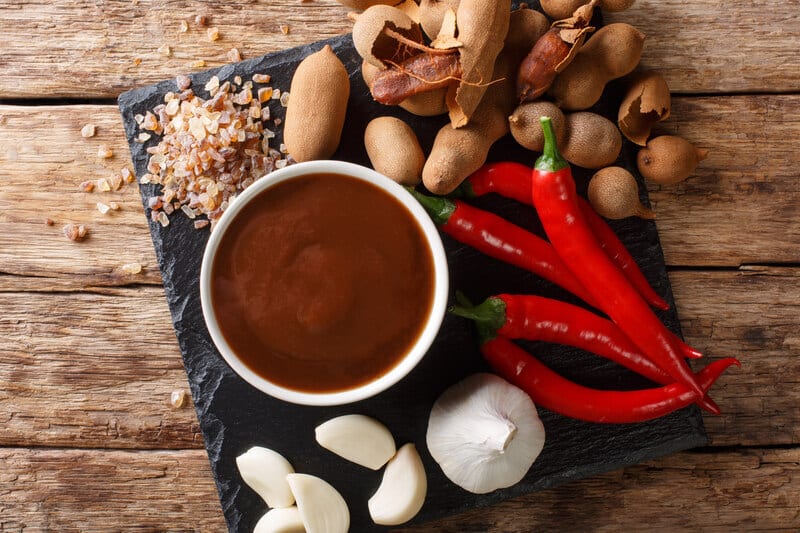
Tamarind is unknown territory to some people. However, it can’t be denied that it’s such an underrated ingredient too. In fact, when one is asked to name a sour ingredient, they would first think of vinegar and lemons. Tamarind wouldn’t even be on the list. Thai cuisine would beg to differ as tamarind is a staple cooking ingredient in the Southeast Asian country. Like pad Thai, the curry (sometimes soup) kaeng som or gaeng som uses tamarind paste to give it a sour and tangy taste that lemons and even vinegar can’t replicate.
READ ALSO: 60 Easy Thai Recipes for a Spicy Home Feast
However, you can extend its uses beyond Thai cooking. One way you can use your tamarind paste is by adding it as a glaze for barbecue sauce. You can create a shiny glaze with tamarind paste diluted in water and sugar. It can also stand in for chutneys if you run out of them. You can also use it as a soup base like the Filipino dish pork sinigang, a sour and savory stew.
Mix with Spices
Some people mistake tamarind as a spice because it is often mixed in with curries and spicy dishes. As it turns out, it also goes well with spices such as ginger, turmeric, garam masala, and coriander. When you mix tamarind paste with these ingredients, it makes an excellent mix for some Indian food like the South-Indian style chicken curry that uses coriander, turmeric, ginger, cumin, and most especially, coconut milk to reduce the tamarind’s sour flavor.
Vegetarians out there may also try this sweet but slightly spicy Thai Panang curry that uses tamarind the same way as the Indian curry. Just replace the lime juice with tamarind paste for a more authentic Thai flavor.
Good for Cocktails and Lemonades
Like lemon and lime, tamarind can also be used for drinks such as cocktails, iced teas, and lemonades. Mix tamarind concentrate with whiskey, bourbon, lime juice, and simple syrup to make the popular tamarind whiskey sour.
Dipping Sauce
Tamarind is not only known to be a base for pad Thai, but it is also known to be a primary ingredient for dipping sauces. Its tangy yet sweet flavor goes perfectly well with Thai spring rolls.
But it’s not only good for spring rolls. It’s also a great accompaniment to anything fried like onion fritters.
6 Substitutes You Can Use In Place of Tamarind Sauce
Trying to get a hold of this tangy ingredient can be a bother especially if there are no Asian grocery stores in sight. Whether you are new to cooking with tamarind or simply would like to find substitutes, we hope the list below can help you find alternatives for the sour ingredient.
Pomegranate Molasses
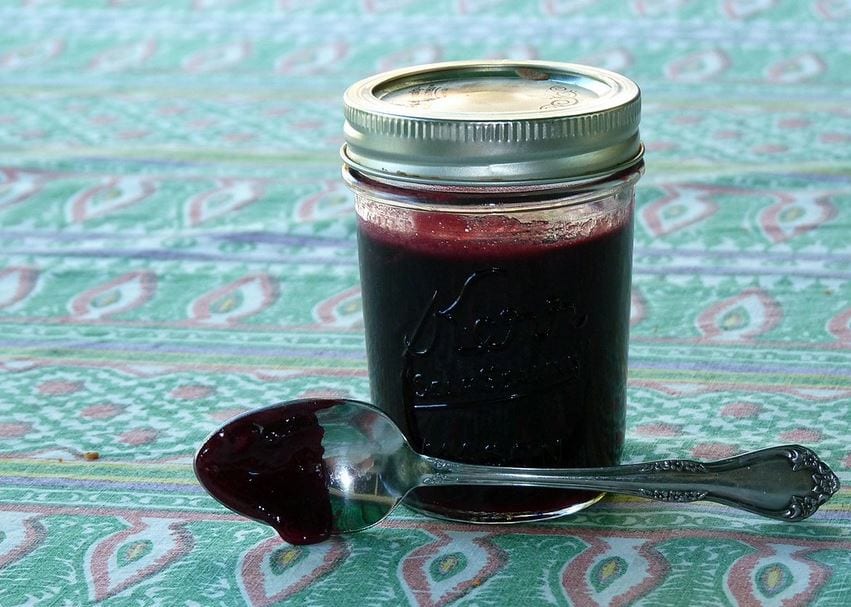
Flickr | Mathesont
If you tried tamarind paste before, you will notice that it also has a molasses-y tang similar to pomegranate molasses. Pomegranate molasses is a syrup made from pomegranate juice. Its flavor notes of sweet and sour compare to tamarind sauces and balsamic vinegar. It is also used in salad dressings, stirred in cocktails and iced teas, used as a glaze, and more. Similarly, you also use tamarind paste the same way, making it the best substitute for tamarind sauces and pastes.
If you’re going to substitute tamarind paste with pomegranate molasses, you simply have to replace the exact amount you need. When tamarind paste is diluted in water (which is how you normally use tamarind paste), both ingredients have almost the same consistency.
Mango Chutney
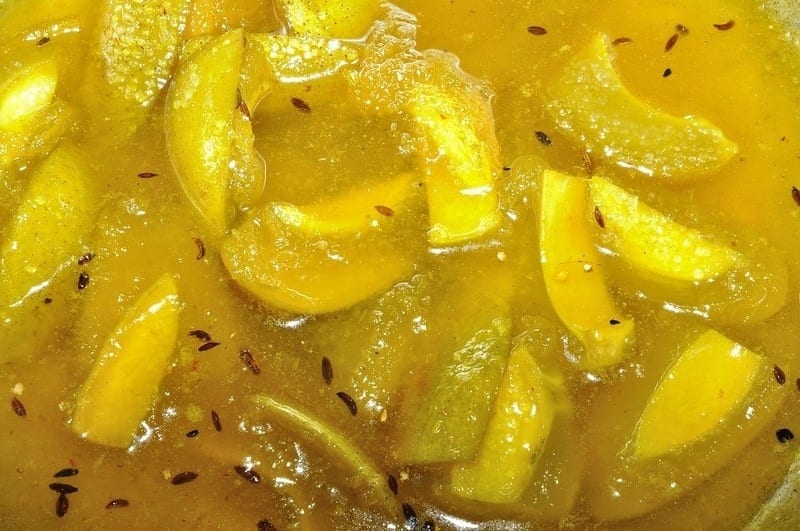
Accompanied by dishes such as this aromatic roasted chicken dish, mango chutney works best with meat. Truly, this one of the perfect ways to balance savory, sweet, and tangy flavors in your favorite dishes.
However, mango chutney only lasts for up to two months even when stored in the fridge. And if you have one that’s near its expiration date, you may use it in place of the tamarind sauce. Next to pomegranate molasses, mango chutney is one of the best substitutes for tamarind paste since it shares the same flavor notes as the original ingredient. Its sweet and sour notes, plus the tanginess that comes from the acidity of the mangoes, make it almost the perfect stand-in for tamarind paste.
Lemon Juice and Brown Sugar
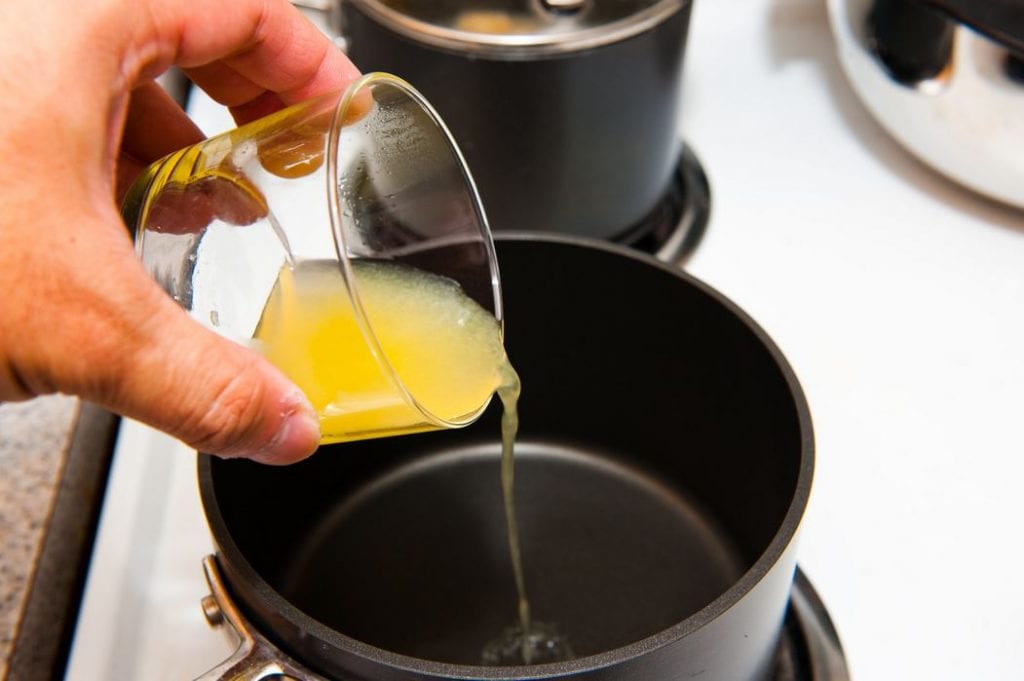
Flickr | star5112
It’s not uncommon for home cooks to replace tamarind with lemon juice and brown sugar. Westerners, in particular, use this combination because either they’re having a hard time looking for the original ingredient in Asian grocery stores, or they’re skeptical about trying tamarind paste. We can’t exactly blame them since trying unfamiliar ingredients can be quite intimidating. Worry not! Lemon juice and brown sugar together may not perfectly replicate its flavor, but it’s still a good alternative.
Additionally, lemon is more on the sour side. Make sure to balance the tanginess and sweetness of this substitute to capture some of the flavor notes of tamarind. If you’re going to choose this substitute, use a little bit of lemon first before adding more as needed.
Vinegar and Brown Sugar
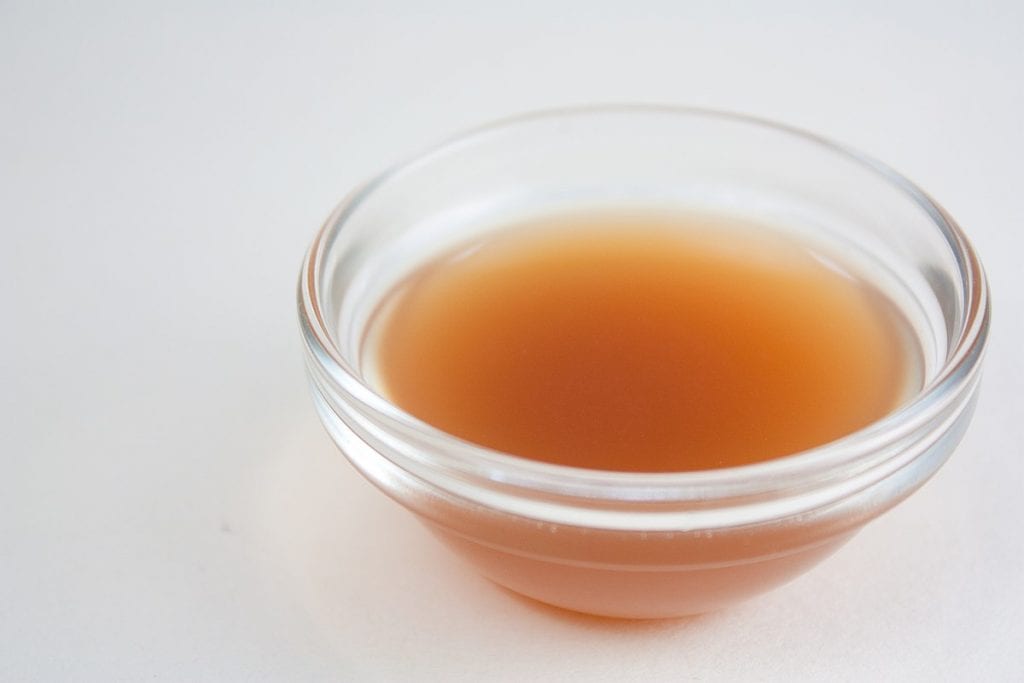
One of the most popular alternatives for tamarind is vinegar. When you use vinegar, be sure to add in brown sugar to help balance its sour flavor. The downside with this substitute is that it lacks the tangy and molasses-y flavor notes of the tamarind. Nevertheless, it’s still a good option to try. Simply add in a mixture of vinegar and sugar in the exact quantity the recipe asks for.
Vinegar, Lemon Juice, and Honey
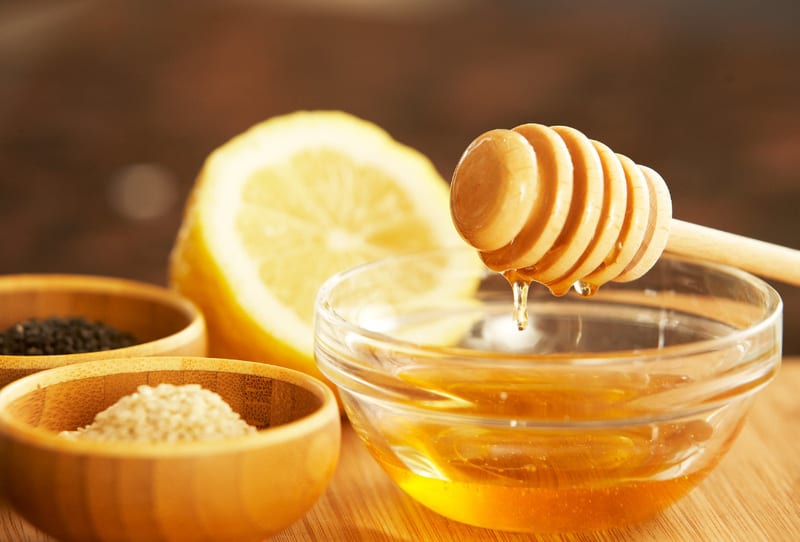
Flickr | Food Thinkers
If you do not have a bottle of tamarind paste lying around, you can also substitute it with a mixture of vinegar, lemon juice, and honey that should be easier to find or are already in your pantry. The mixture requires one tablespoon of white vinegar, one tablespoon of honey, and one teaspoon of lemon or lime juice. The lemon and honey can bring the vinegar’s acidity flavor notes down a notch and is enough to almost duplicate the tamarind’s flavor profile.
Worcestershire Sauce
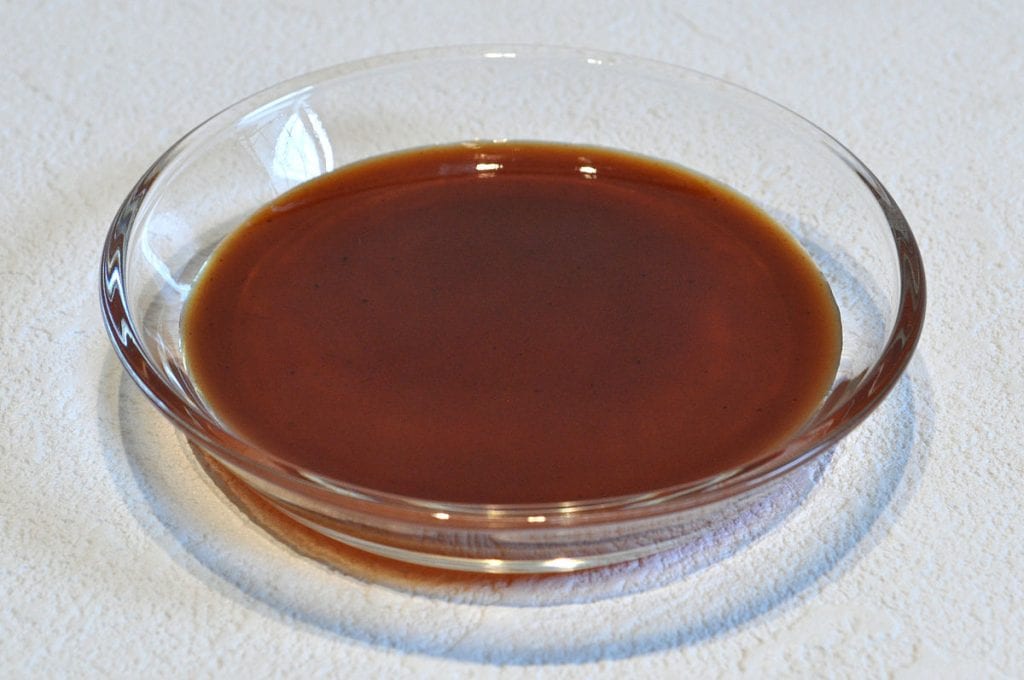
We mentioned how tamarind paste can be the perfect substitute for Worcestershire sauce as a meat tenderizer, likewise with tamarind paste. However, not all Worcestershire sauce can be used as a replacement. That is because not all Worcestershire sauces in the market use tamarind paste as its ingredient. So before you buy one, check the ingredient list first and make sure they use tamarind.
But even if tamarind is one of the primary ingredients for making this condiment, Worcestershire sauce also has a strong umami flavor aside from its sour notes. If you don’t want that umami kick in your dishes, you may want to look for better alternatives. Otherwise, the key to using this ingredient in place of tamarind is to add it little by little to your dishes.
Worry Not When You Use Tamarind Paste
Don’t be intimidated. Using this ingredient doesn’t require you to be a Thai and Indian chef. Because really, this versatile ingredient only requires basic knowledge in the kitchen to be able to make savory dishes and desserts. That and with our guide, you’ll surely be on your way to making unforgettable dishes with tamarind paste.

